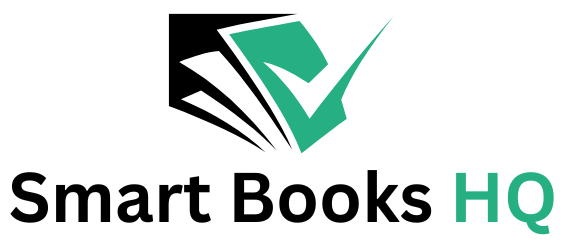Ever checked your bank account and thought, Wait… where did all my money go? Maybe a deposit is MIA, an expense looks suspicious, or—worst case—you spot a charge that makes you question if you actually signed up for a llama rental service (hey, no judgment).
If this sounds familiar, welcome to the chaotic reality of small business finances. Numbers don’t always match up. And when they don’t, it’s usually because something got lost, duplicated, or misrecorded.
That’s where bank reconciliations swoop in to save the day—kind of like Batman, but with spreadsheets instead of gadgets. It’s the process of matching what’s in your bookkeeping software (like QuickBooks) with your actual bank statements to make sure your records are 100% accurate. Skip this step, and you might be setting yourself up for a financial disaster.
But don’t worry—I’ve got you covered with everything you need to know, served up with a side of humor (because, let’s be honest, bookkeeping could use a little fun).
What is Bank Reconciliation, and Why Should You Care?
Imagine going on a road trip without ever checking your GPS. You might think you’re headed to the beach, but one wrong turn and suddenly you’re deep in the woods with no cell service and a half-eaten granola bar for survival. That’s what running a business without bank reconciliation is like.
It’s your financial reality check, ensuring that what you think is happening with your money is actually happening. Here’s why making this a habit is a game-changer:
✅ Catching Errors Before They Become Nightmares
Banks make mistakes. Payments get recorded incorrectly. Vendors double charge. You don’t want to find out months later that an error cost you thousands. A quick reconciliation each month = fewer surprises.
✅ Preventing Fraud (Before It Drains Your Account)
You’d be shocked how often businesses get hit with unauthorized charges. If you’re not regularly checking, fraud can slip by unnoticed. The sooner you catch it, the better chance you have of getting your money back.
✅ Knowing Your Actual Cash Flow (Not Just What You Think You Have)
Your bookkeeping might show $10,000 in your account, but your bank says $7,500. Where did the $2,500 go? Reconciling helps you see the full picture, so you don’t overspend and end up in a cash flow crisis.
✅ Making Tax Season Less of a Horror Movie
Imagine trying to explain to your accountant why your numbers don’t match when taxes are due tomorrow. Yeah… not fun. Regular reconciliation keeps your books in shape all year long, so tax time is way less stressful.
✅ Making Smarter Business Decisions
Growth requires knowing your numbers. Whether you’re planning for a new hire, an expansion, or just trying to stay profitable, accurate books help you make informed decisions. Otherwise, you’re basically guessing.
How to Reconcile Your Bank Accounts in QuickBooks Online (Step-by-Step Guide)
Okay, so now that you know why reconciliation is important, let’s make it happen. If you’re using QuickBooks Online, you’re in luck—this process is super simple.
Step 1: Grab Your Bank Statements
Before you do anything, download your latest bank and credit card statements. You’ll need them to cross-check your transactions.
Step 2: Start the Reconciliation Process
Open QuickBooks and head to Accounting > Reconcile.
Choose the account you want to reconcile (checking, savings, credit card—you name it).
Enter the Ending Balance and Ending Date from your bank statement.
Step 3: Match Transactions Like a Detective
- QuickBooks will pull up a list of transactions.
- Compare each one with your bank statement.
- If a transaction matches, check it off the list.
- If something is missing or incorrect, time to investigate!
Step 4: Fix Any Discrepancies
🚨 Missing Transactions? If an expense or deposit isn’t in QuickBooks, manually add it.
🚨 Duplicate Transactions? If something shows up twice, delete or adjust it.
🚨 Wrong Amounts? If numbers don’t match, double-check receipts and make corrections.
Step 5: Confirm & Celebrate!
- If your QuickBooks balance matches your bank statement down to the last cent, congrats! 🎉 Hit Finish Now, and you’re done.
- If the numbers don’t match, go back and review until you find the issue (and don’t worry—errors happen to everyone).
Pro Tips to Make Monthly Reconciliation a Breeze
🔹 Automate with Bank Feeds – Connect your bank to QuickBooks so transactions flow in automatically (less manual entry = fewer mistakes).
🔹 Set a Monthly Reminder – Put it on your calendar! The more often you do it, the easier it gets.
🔹 Act Fast on Discrepancies – Don’t let errors sit for months. Fix them ASAP to avoid bigger issues down the road.
🔹 Reconcile ALL Your Accounts – Checking, savings, credit cards, PayPal, Venmo—if money flows through it, reconcile it!
🔹 Keep Digital Records – Store receipts in QuickBooks or a cloud system so you have proof in case of an audit.
Final Thoughts: Make Bank Reconciliation a Habit
I get it—bank reconciliation isn’t exactly thrilling. It’s not like binge-watching Netflix or scrolling through TikTok. But skipping it is like ignoring a check engine light—eventually, things will break down, and fixing them will be a LOT more painful.
So, set a reminder, get it done once a month, and enjoy the peace of mind that comes with knowing your finances are in top shape. Your books (and your future stress levels) will thank you.
